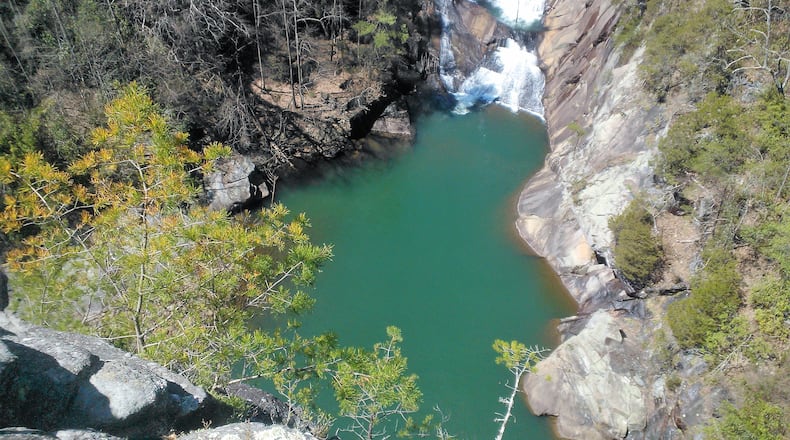We went deep into Georgia last weekend, down to the bottom of the spectacular Tallulah Gorge along the border between Rabun and Habersham counties in the northeastern part of the state.
A geologic marvel, Tallulah Gorge is about two miles long and 1,000 feet deep, one of the most awe-inspiring canyons in the eastern United States. Its sheer granite walls fall almost at a 90 degree angle from the land above. They form dramatic cliffs that amaze first-time visitors -- and even those of us who have seen them many times. Variations in sunlight, shade and moisture caused by the steep cliffs create several different ecosystems in and around the gorge.
To get to the bottom of the gorge, the centerpiece of Tallulah Gorge State Park, you must negotiate a steep staircase of some 600 steps straight down the side of the canyon. You also have to walk across a swaying suspension bridge that stretches over the yawning chasm 80 feet below.
The effort is worth it, because at the bottom you are treated to a close-up view of one of Georgia’s most breathtaking waterfalls, Hurricane Falls. Also at the bottom, the view of the canyon towering above you is one of the Southeast’s most impressive sights.
A loop trail around the gorge’s rim also offers grand views of the canyon's five other roaring waterfalls, which drop the rushing Tallulah River more than 500 feet in one mile.
The spectacular scenery is enough to lure me to the gorge year after year. But what also draws many folks, including me, is the gorge’s remarkable geology. Tallulah Gorge’s cliffs are made up of quartzite granite, one of Earth’s hardest rocks.
Yet, these super-hard rocks were at one time layers of sand, covered by ocean waters. Over eons the huge sand layers were compacted and cemented into rock, called sandstone. Then, under the tremendous heat and pressures of mountain building, the sandstone was transformed into quartzite.
The Tallulah River, flowing to the Savannah River, carved most of the gorge from the quartzite over millions of years. The river is still carving. Much of its flow, however, was stymied by a 126-foot-high concrete dam built upstream of the gorge in 1911-13 by the predecessor of Georgia Power Co. The dam and its power house supplied electricity for Atlanta’s streetcars and industries. The scenic 63-acre lake created by the dam is now a part of the state park.
More information: www.gastateparks.org/TallulahGorge.
In the sky: The moon will be new on Sunday. On Monday, look for a thin crescent moon low in the west just after dark, said David Dundee, astronomer with Tellus Northwest Georgia Science Museum. Mercury, low in the west, sets just after dark and appears near the moon Monday evening. Venus is in the west just after sunset and sets about three hours later. It will appear near the moon Wednesday evening. Mars sets in the west after midnight and will appear near the moon Thursday night. Jupiter rises out of the east about midnight. Saturn is high in the west at sunset and sets in the west after midnight. It will appear near the moon Friday night.
About the Author
Keep Reading
The Latest
Featured


